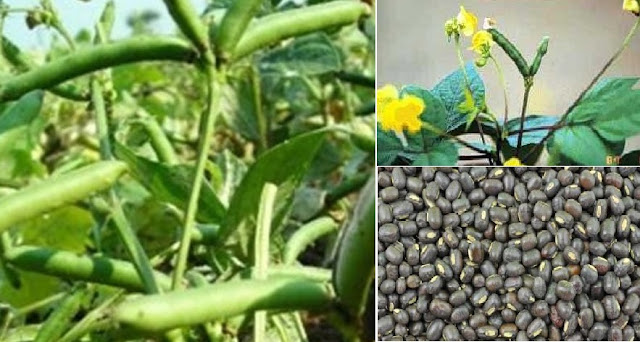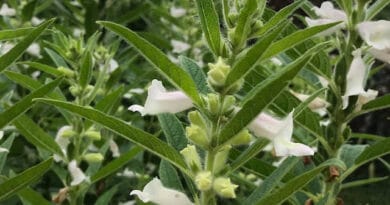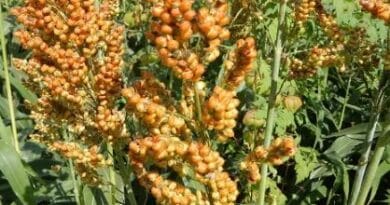Cultivation of Black Gram (Urad) ; A Complete Information Guide
Cultivation of Black Gram (Urad); Provides several health benefits because of its excellent nutritional profile
Black gram (urad) (Vigna mungu L.Hepper) belongs to the family Leguminosae It is an annual plant attaining a height of 30 to 100 cm. It is one of the important pulse crops grown throughout India. Black gram (urad) is probably a native of India There is a mention of urd seed in Vedic texts such as Kautilya’s ‘Arthasasthra’ and ‘Charak Samhita’.
Common Names of Blackgram:
Sanskrit – Masha
Nepali – Maas
Usage of Black Gram (Urad)
6) It is used as nutritive fodder, especially for milch cattle.
Nutritive Value of Black Gram (Urad);
100 g of black gram (Urd) contains the following nutritive values:
| Nutrient | Value | Nutrient | Value |
| Moisture | 10.8 g | Sodium | 38 mg |
| Protein | 1.8 0 g | Potassium | 983 mg |
| Fat | 25.21 g | Magnesium | 267 mg |
| Fiber | 18.3 g | Zinc | 3.35 mg |
| Carbohydrate | 58.9 g | Thiamine(B1) | 0.273 mg |
| Calcium | 138 mg | Riboflavin | 0.254 mg |
| Phosphorus | 379 mg | Niacin (B3) | 1.447 mg |
| Iron | 7.57 mg | Folate (B9) | 628 μmg |
Medicinal Importance of Black Gram (Urad);
Classification of Black Gram:
Vigna mungo is subdivided into two subspecies.
Climatic Requirements for Black Gram (Urd) Cultivation
Black gram (urad) requires a hot and humid growing season. It is generally grown as a summer and rainy season crop in northern India. It is grown in both the main seasons of the eastern and southern parts of the country.
Soil Requirement for Black Gram (Urad) Cultivation:
- Black gram (urad) does well on heavier soils, such as black cotton soils, which retain moisture better. However, it can be grown on all the soils, from sandy loam to heavy clay, except alkaline and saline soils.
- Loam or slightly heavy soils with a neutral pH are best suited for its cultivation.
- It should be grown on heavier soils, in particular areas where rainfall is scanty, and on well-drained medium soils in humid regions.
Important Varieties of Black Gram (Urad)
Variety | Duration (Days) | Yield q/ha |
Pant – U-19 | 75-80 | 12-14 |
T-9 | 75-80 | 8-10 |
Azad -urd -1 | 75-80 | 10-12 |
PDU – 1 | 70-80 | 12 – 14 |
KU – 300 | 65-70 | 10-12 |
Kalindi | 55-60 | 12-15 |
b) Selected Varieties based on Special Characteristics;
Characteristics | Varieties |
Suitable for all seasons | LBG-20 (Teja), T-9, LBG-623, WBG-26 (Usha), PBG-1, LBG-752, MBG-207, PU 31 |
Suitable for the spring season. | PDU 1 and Mash 414 |
Yellow Mosaic Virus (YMV) resistant | Pant U – 19, Pant U – 30 Sarala, Jawahar urd – 2, Teja (LBG – 20), ADT – 4 |
Powdery Mildew (PM) resistant | TAU – 2 , IPU 02 – 43 |
Stem fly resistant | KBG – 512 |
Cercospora leaf spot resistant | Jawa har urd – 2, Jawahar urd – 3
|
Rotations and Mixed Cropping
Field Preparation for Black Gram (Urad) Cultivation ;
- The field is prepared by one ploughing with a mouldboard plough and followed by two to three harrows, followed by planking. The field should be level and free from weeds.
- For summer crops, after harvesting Rabi crops, give two to three harrowings followed by planking
- To ensure good germination, pre-sowing irrigation should be given.
Seed and Sowing for Black Gram (Urad) Cultivation ;
(1) Time of Sowing
(2) Seed Rate And Spacing
Use of Manures and Fertilisers in Black Gram (Urad) Cultivation ;
- Being a legume crop, urad needs a small quantity of nitrogen for the early growth period on those soils that are poor in organic matter. Such soils should get about 15-20 kg of nitrogen per hectare as a starter dose
- However, phosphatic and potassic fertilizers should be applied as per soil test values. In case soil test facilities are not available, one can apply 50-60 kg of P₂O₅ and 30-40 kg of K₂O per hectare.
- Also, apply Sulphur @ 20 kg/ha along with NPK. It will not only enhance the yield but also provide benefits to succeeding crops.
- Apply a foliar spray of 2% DAP and 2% KCl at the time of the pre-flowering stage to enhance the yield.
- The fertilizers should be applied by drilling at the time of sowing in such a way that they are placed about 5-7 cm below the seed.
Water Management in Black Gram (Urad) Crop ;
For rainy-season crops, irrigation is not needed, but good drainage is essential. Irrigation facilities should be available for raising urad crops during the summer season. The number and frequency of irrigation depend upon the soil type and prevailing weather during the growth period. Generally, the crop should get irrigation at an interval of 10–15 days. From flowering to the pod development stage, there is a need for sufficient moisture in the field.
Weed Control in Black Gram (Urad) Crop ;
One or two hand weedings should be done up to 40 days of sowing, depending upon the weed intensity. Weeds can be controlled by the use of chemicals too. Use Basalin 1 kg a.i. per hectare in 800-1000 liters of water as a pre-planting spray. It should be well incorporated in the soil before sowing. Pendimethalin or metalachlor at 1.0-1.5 kg/ha are found effective as a post-emergence spray.
Harvesting and Threshing of Black Gram (Urad)
Urad should be harvested when most of the pods turn black. Overmaturity may result in shattering. The harvested crop should be dried on the threshing floor for a few days and then threshed. Threshing can be done either manually or by trampling under the feet of bullocks.
The yield of Black Gram;
A well-managed crop, as indicated above, may yield about 15-20 quintals of grain per hectare.
Read further;




